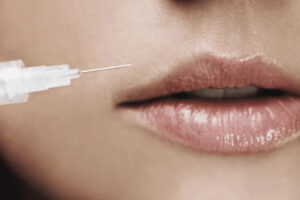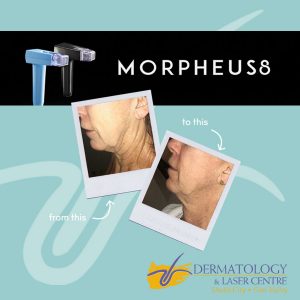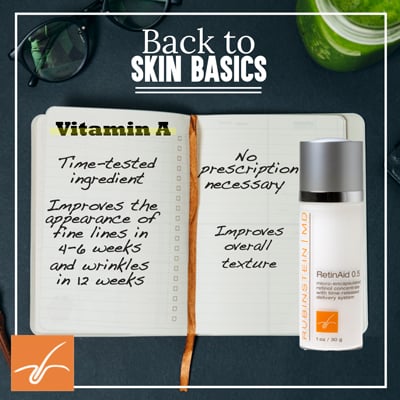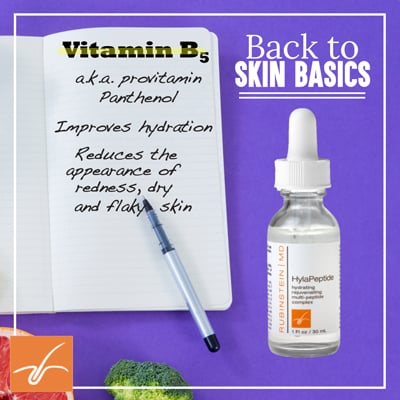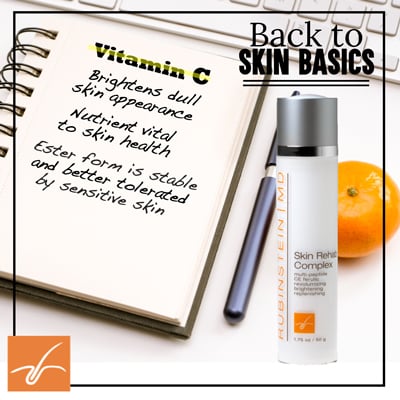Dr. Rubinstein Discusses Skin Cancer in NewBeauty Summer 2019 Issue
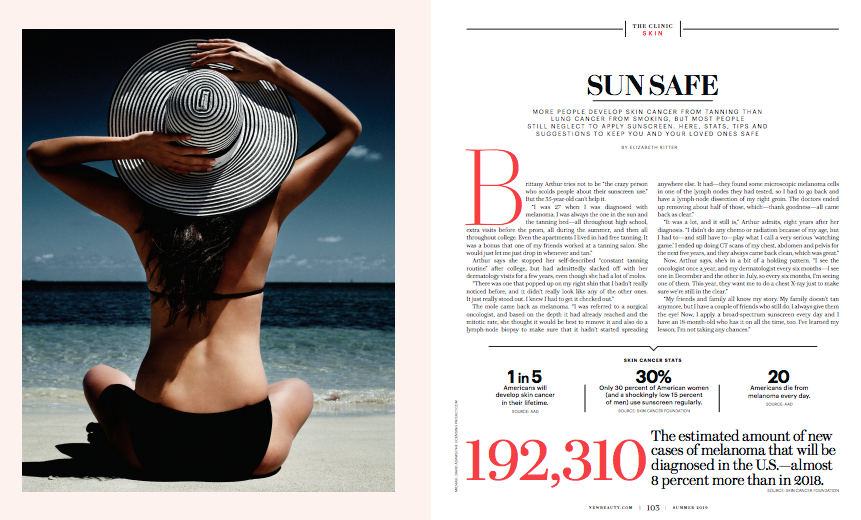
Brittany Arthur tries not to be “the crazy person who scolds people about their sunscreen use.” But the 35-year-old can’t help it. “I was 27 when I was diagnosed with melanoma. I was always the one in the sun and the tanning bed—all throughout high school, extra visits before the prom, all during the summer, and then all throughout college. Even the apartments I lived in had free tanning. It was a bonus that one of my friends worked at a tanning salon. She would just let me just drop in whenever and tan.”
Arthur says she stopped her self-described “constant tanning routine” after college, but had admittedly slacked off with her dermatology visits for a few years, even though she had a lot of moles. “There was one that popped up on my right shin that I hadn’t really noticed before, and it didn’t really look like any of the other ones. It just really stood out. I knew I had to get it checked out.” The mole came back as melanoma. “I was referred to a surgical oncologist, and based on the depth it had already reached and the mitotic rate, she thought it would be best to remove it and also do a lymph-node biopsy to make sure that it hadn’t started spreading anywhere else. It had—they found some microscopic melanoma cells in one of the lymph nodes they had tested, so I had to go back and have a lymph-node dissection of my right groin. The doctors ended up removing about half of those, which—thank goodness—all came back as clear.”
“It was a lot, and it still is,” Arthur admits, eight years after her diagnosis. “I didn’t do any chemo or radiation because of my age, but I had to—and still have to—play what I call a very serious ‘watching game.’ I ended up doing CT scans of my chest, abdomen and pelvis for the next five years, and they always came back clean, which was great.” Now, Arthur says, she’s in a bit of a holding pattern. “I see the oncologist once a year, and my dermatologist every six months—I see one in December and the other in July, so every six months, I’m seeing one of them. This year, they want me to do a chest X-ray just to make sure we’re still in the clear.”
“My friends and family all know my story. My family doesn’t tan anymore, but I have a couple of friends who still do. I always give them the eye! Now, I apply a broad-spectrum sunscreen every day and I have an 18-month-old who has it on all the time, too. I’ve learned my lesson; I’m not taking any chances.”
While Arthur’s story is scary, it’s not all that surprising: Skin cancer is the most common cancer in the U.S. and—as New York dermatologist Michelle Henry, MD stresses—it doesn’t discriminate.
“There is still a misconception that skin cancer only affects older, fair-skinned individuals. I see it in patients in their early 20s. I also see it in patients with very dark skin. Although it is somewhat rarer in those populations, the outcomes can be worse because of delays in diagnosis.” Besides the religious use of sunscreen, Dr. Henry recommends what she refers to as “regular structured surveillance,” including monthly skin self-checks at home (about half of melanomas are self-detected) and annual
full-body skin checks with a derm.
EARLY DETECTION
Dr. Henry says she’s also seen an uptick in the use of one device in particular: “Recently, the use of dermatoscopes has become more common. There is also a new device called Nevisense that is designed to detect malignant melanoma. It can detect the relative risk of a mole in the office in few minutes—potentially helping doctors diagnose melanoma early before the classic clinical features arise.”
Studio City, CA dermatologist Gene Rubinstein, MD is also partial to dermatoscopes, mainly because they allow for better identification of skin cancers, and differentiating them from benign conditions. “There’s also a new device called the DermoScan, which we use for full-body mole mapping. It allows uniform, standardized pictures to be taken of the entire body, and the ability to compare pictures taken at different times. The software allows us to see which moles are changing, and this is extremely helpful to us. On patients with multiple moles, it allows us to flag the changing moles, and view them side by side on the monitor in order to decide if a mole needs further examination.”
Another addition to the field is VivaScope, a newly FDA-approved imaging device that allows doctors to obtain “virtual biopsies” of the skin, with microscopic detail, and without cutting. “This device only takes a few minutes to acquire images, allows for instant diagnosis and is pain-free,” says Dr. Rubinstein. “The future of skin diagnosis is definitely noninvasive.”
COLOR BLIND
Skin cancer affects every skin tone, and early detection is essential: A study published in JAAD found skin cancer to be more deadly in people of color, due to delays in diagnosis.
Dr. Rubinstein is based in California where it’s almost always a nice day, but he says it’s this kind of sun-focused thinking that can get people into trouble. “So many patients think you can only get skin cancer by laying out in the sun,” he says. “That is not true, because cumulative sun exposure often leads to skin cancer, and not just periods of intense exposure, as happens on vacation. It’s the daily, small doses of UV exposure that add up, including that received in the car while driving. In the U.S., the majority of skin cancers seen on the face, for example, happen on the left side, due to increased UV exposure from the driver’s-side window.”
Dr. Rubinstein also sees many patients who think that if they have skin that tans easily, their chances of getting skin cancer are lower. “Many people of Mediterranean origin believe they are less likely to get skin cancer than those with lighter skin. This belief sometimes leads them to seek more sun, and therefore increase their risk of skin cancer.”
Another misconception? “A base tan won’t decrease the chances of burns or prevent skin cancer. Any UV exposure causing a tan is by definition sun damage, and will increase skin cancer risk.”
While New York plastic surgeon Stafford Broumand, MD is wary of calling attention to anything “new” regarding skin cancer treatment, he has seen a recent shift in the field. “The ‘new’ isn’t so important—what’s important is that more people are getting checked and then getting the skin cancer removed.”
INVISIBLE SOLUTIONS
New York dermatologist Dendy Engelman, MD, and many other doctors, are particularly sensitive to fears that skin cancer treatments will cause permanent defects. “Doctors who perform reconstruction on those who have had skin cancer are now utilizing multiple modalities to ensure the best aesthetic and skin health outcome—it doesn’t have to be scary. This means coupling laser therapies with topical treatments for the scar and surrounding skin in order to eliminate perceptible scarring and minimize the risk of other skin cancers erupting in these regions. Pulsed-dye laser, IPL, PDT, and fractionated CO2 are all used to assist in the aesthetic result.”
“Patients are always amazed at how great they look one week post-surgery,” adds Dr. Engelman. “They will often like the side of their face that was treated better than the untreated side!” Boston facial plastic surgeon Jaimie DeRosa, MD agrees. “Most patients are surprised to find out that, in the right hands, skin cancer reconstruction can result in a nearly imperceptible scar or deformity.”
THE RIGHT TREATMENT
Because there are several types of cancers, Dr. Broumand says patients need to know what kind of skin cancer they are dealing with and ensure they are going to the right doctor to get the correct procedure to remove it. “People are always surprised that plastic surgeons do skin cancer reconstruction, even though we have a clear understanding of how to make the wounds heal better over time.”
Likewise, Dr. DeRosa isn’t a dermatologist, but she does do her fair share of skin cancer reconstruction and she’s particularly excited about two innovations: “3-D printing and tissue engineering technologies. Three-dimensional printing has been shown to aid in improving symmetry and results when repairing defects in difficult areas, such as on the face. Then there is tissue engineering, which has produced several dermal matrix materials to enhance the outcomes in the repair of large cutaneous defects,” she says. “I am excited to see the continued collaboration between science and biomedical engineering and technology. Colleagues are working hard to create viable organs, such entire ears via tissue engineering, which will open more options for repairing defects after skin cancer removal.”
TOPICAL OPTIONS
The bottom line, Dr. Rubinstein says, is that there is much more flexibility now in the treatment of skin cancers. “Mohs surgery is still the gold standard for areas such as the face, or large non-melanoma skin cancers, but there are topical agents, or creams, that can be used for the treatment of pre-cancers or thin non-melanoma skin cancers,” he says. “We also perform a procedure called photodynamic therapy (PDT), which can quickly eliminate pre-cancerous growths by using a topical solution on an area of skin, and then exposing the area to blue LED light.”
The American Academy of Dermatology (AAD)’s official stance is protection, protection, protection: “Because exposure to UV light is the most preventable risk factor for all skin cancers, the AAD encourages everyone to stay out of indoor tanning beds and protect their skin from the sun’s harmful UV rays by seeking shade, wearing protective clothing and using a broad-spectrum, water-resistant sunscreen with SPF 30 or higher.”
In 1981, Australia launched the “Slip, Slop, Slap” campaign with Sid the Seagull (a sun-safety version of Smokey the Bear). Sid recently added “Seek” and “Slide” to his rules: slip on sun-protective clothing; slap on a hat; slop on sunscreen; seek shade and slide on sunglasses. Richland, WA dermatologist Sidney B. Smith, MD loves the newer FDA sunscreen proposals, but holds patients to “an even higher standard” that Sid the Seagull would approve. “One, avoid peak hours of sun exposure whenever possible. Two, wear sun-protective clothing. Three, apply and reapply sunscreen,” says Dr. Smith. “Sunscreen needs to be SPF 30 or higher and contain zinc and/or titanium dioxide for happy, healthy skin.”
*Individual results may vary; not a guarantee.
Schedule Now Patient Info Guide


